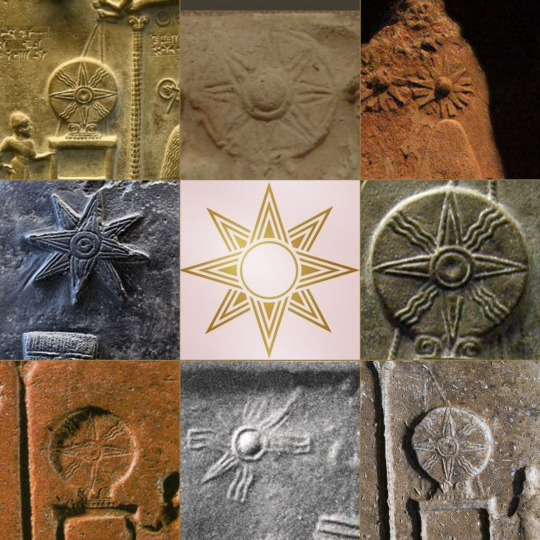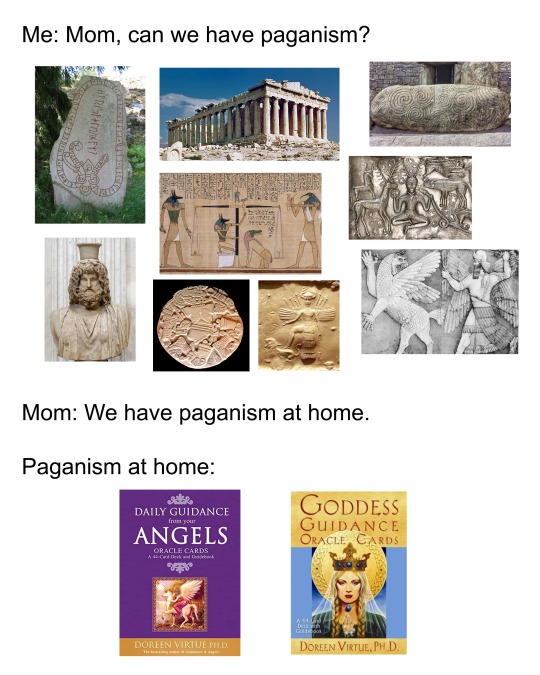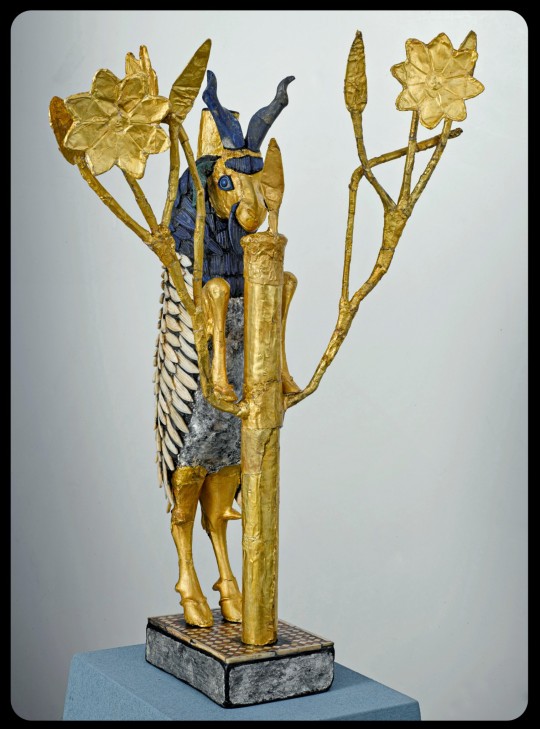#sumerian
Explore tagged Tumblr posts
Text

The star of Ishtar
The Octagram symbol is a star ideogram that commonly appears in ancient Babylonian iconography. The eight-pointed star is usually associated with ancient goddesses such as Ishtar, Innana, Isis and Venus. These goddesses were all seen as protectress of love, fertility, beauty, divine law and power.
The symbol was originally seen as a representation of the seven heavens ruled by the goddess and later became a representation of the planet Venus associated with fertility goddesses. The planet is the third brightest object in Earth's sky after the Sun and the Moon and in the past, it was referred to as the morning or evening star. In the Old Babylonian period, the planet Venus was known as Ninsi'anna translates to "divine lady, illumination of heaven".
In many myths, Inanna’s descend into the netherworld and return to the heavens may correspond with the movements of the planet Venus in the sky, setting in the West and then rising again in the East.
The discontinuous movements of Venus relate to both to the myth as well as Inanna's dual nature. Other theories recognize the story of Inanna's descent into the underworld as a reference to an astronomical phenomenon associated with retrograde Venus.
The symbol refers to the cosmic power of the goddess as ruler of sky and heavens and connected with the transcendental world. Her power stands in the mystery of magic and creation of the universe itself and for this reason the octagram became a powerful sigil used in antiquity as a devotional iconography connected with the goddess worshippers.
#witchcraft#witchblr#paganism#witches of tumblr#pagan witch#inanna#ishtar#octagram#venus#sacred symbols#symbolism#esoteric#sumerian#occultism#italianwitch#strega
563 notes
·
View notes
Text

Tinkering around in blender and gimp rn
#my wips#sims 4#s4mm#sims 4 history#mesopotamia#mesopotamian#assyrian#assyria#sumer#sumerian#queen puabi#bablyonian#bablyon#wip hair#wip outfits
203 notes
·
View notes
Text

Sumerian/Mesopotamian Amulet Seal in the Form of a Bull, c. 3250 BCE.
#history#archaelogy#artifacts#art history#old art#art#statue#ancient history#bronze age#iron age#neolithic#mesopotamia#sumerian#iraqi#historical#cute#ancient civilizations
15K notes
·
View notes
Photo

#pagan memes#paganism#neopaganism#memes#hellenic paganism#hellenic polytheism#helpol#norse paganism#asatru#egyptian paganism#kemeticism#mesopotamian mythology#sumerian#celtic paganism#doreen virtue
1K notes
·
View notes
Text


Gil and Enkidu in some Sumerian gowns
(disclaimer: these outfits are not historically accurate! i referenced the designs from different illustrations of ancient Sumerian/Assyrian gowns. this is a personal interpretation. Enkidu's clothing has both traditionally male and female elements, which would not be possible in real history (probably.) anyways don't take this one seriously :)
#anime art#artists on tumblr#fgo#fate grand order#fgo fanart#enkidu#gilgamesh#fate babylonia#fate strange fake#sumerian#gilkidu
290 notes
·
View notes
Text

Sumerian statuette, 3000 BC.
Collection of the Iraqi Museum.
24 notes
·
View notes
Text

Астарта и Ферка
Художник - Lokey
❦ ════ •⊰✷⊱• ════ ❦
Astarte and Ferka
Artist - Lokey
#pantheon#pantheon roleplay#roleplay#roleplay blog#roleplay oc#oc roleplay#pantheon universe#pantheon universe: characters#artists on tumblr#artwork#ferka#lord bertilak#bertilak de hautdesert#astarte#goddess ishtar#babylon#sumerian
7 notes
·
View notes
Text

Fragment of a vessel with frontal image of a Sumerian goddess and Cuneiform inscription from Entemena, the ruler of Lagash. The basalt vessel dates back to the Mesopotamian Early Dynastic Period around 2430 BCE, and it depicts one of the first Mesopotamian images of a female deity. The Pergamon Museum, Berlin, GERMANY.
Photo by Babylon Chronicle
433 notes
·
View notes
Text

Although the alewife is a small part of the epic of Gilgamesh as a whole, her wisdom and near stoic attitude towards life definitely makes her my favorite character
99 notes
·
View notes
Text

bull calf polemount, sumerian c. 2700 b.c.
207 notes
·
View notes
Text
something that kind of bothers me about modern feelings toward the epic of gilgamesh is how it's been COMPLETELY watered down to being "gay". Bear with me as I explain.

this is more of an extreme example, but I see this take all the time (not the yaoi part. the gay lover part). it's boiled down to the fact that it's gay over literally anything else in the epic. Gilgamesh's lament to Urshanabi about Enkidu's loss is overshadowed by the fact that Gilgamesh is mourning his gay lover. Gilgamesh is on a journey because he lost his gay lover. Gilgamesh and Enkidu were gay.
Now I understand that with a modern lens, people tend to lock on to how unabashedly Gilgamesh mourns Enkidu, because it's gay and because it's the oldest written epic in human history. People feel deeply connected to the idea that people like them have been around since the dawn of literature. But placing exclusive focus on the nature of the relationship as gay, rather than why the relationship or its loss was important, erases the story the epic is trying to tell.
The Epic of Gilgamesh is a story about love, yes, but it is not a love story. It's about the fear of death, coping with loss, and desperation to stave off the inevitable. It's about the bonds of friendship, about hardship, coming to terms personal change and losing pieces of yourself as you learn and grow. It is about consequences, arrogance, death, second chances, mourning, yearning, loving and LIVING. The Epic of Gilgamesh is about the entire human experience and one man's struggle to accept it. What does it mean to have lived? What does it mean to have loved, and lost? What does it mean to die, and to be remembered? What does it mean to be human?
It is perfectly okay to find appreciation for the Epic because of Gilgamesh and Enkidu's relationship. But also understand that the world's oldest story is not about two gay men who loved each other. It is a story about being alive.
TLDR;

#the epic of gilgamesh#mesopotamia#sumerian#once again recommending that everyone read the epic of gilgamesh at least once because it really is a great story#gilgamesh and enkidu's relationship is first of all--a minor detail at best. homosexuality was normal in sumerian society#so it wouldn't have been unusual. in fact placing such intense focus on it is what's unusual#also they weren't even homosexual. they both also sleep with women. but the erasure of bisexuality is a completely different hornet's nest#i could also probably write a post about how watered down the whole ea-nasir thing is too#but hes so much of a meme i might as well try to convince a brick wall to get up and walk for all the good it'd do#anyway. im pretentious about this topic because i love it so fucking dearly. please recognize what it is youre appreciating
487 notes
·
View notes
Text

Iridescent silicious glass jar from Nippur
Ur III period, Neo-Sumerian, c. 2112-2004 B.C.
Al-Qādisiyyah Governorate, Iraq
509 notes
·
View notes
Text
"Ram in the Thicket" Statuette from Ur (Iraq), c.2600-2400 BCE: this statuette is made of lapis lazuli, shells, gold, silver, limestone, copper, and wood

This sculpture is about 4,500 years old. It was unearthed back in 1929, during the excavation of the "Great Death Pit" at the Royal Cemetery of Ur, located in what was once the heart of Mesopotamia (and is now part of southern Iraq).

Sir Leonard Woolley, who led the excavations at the site, nicknamed the statuette "ram caught in a thicket" as a reference to the Biblical story in which Abraham sacrifices a ram that he finds caught in a thicket. The statuette is still commonly known by that name, even though it actually depicts a markhor goat feeding on the leaves of a flowering tree/shrub. Some scholars refer to it as a "rampant he-goat" or "rearing goat," instead.

It was carved from a wooden core; gold foil was then carefully hammered onto the surface of the goat's face and legs, and its belly was coated in silver paint. Intricately carved pieces of shell and lapis lazuli were layered onto the goat's body in order to form the fleece. Lapis lazuli was also used to create the goat's eyes, horns, and beard, while its ears were crafted out of copper.
The tree (along with its delicate branches and eight-petaled flowers) was also carved from a wooden base, before being wrapped in gold foil.
The goat and the tree are both attached to a small pedestal, which is decorated with silver paint and tiny mosaic tiles made of shell, lapis lazuli, and red limestone.

This artifact measures 42.5cm (roughly 16 inches) tall.
A second, nearly-identical statuette was also found nearby. That second sculpture (which is also known as the "ram in the thicket") is pictured below:

There are a few minor differences between the two sculptures. The second "ram" is equipped with gold-covered genitals, for example, while the first one has no genitals at all; researchers believe that the other sculpture originally had genitals that were made out of silver, but that they eventually corroded away, just like the rest of the silver on its body.
The second "ram" is also slightly larger than the first, measuring 45.7cm (18 in) tall.
Both statuettes have a cylindrical socket rising from the goats' shoulders, suggesting that these sculptures were originally used as supports for another object (possibly a bowl or tray).

The depiction of a goat rearing up against a tree/shrub is a common motif in ancient Near Eastern art, but few examples are as stunning (or as elaborate) as these two statuettes.
Sources & More Info:
Penn Museum: Collections Highlight
Penn Museum: Ram in the Thicket
Expedition Magazine: Rescue and Restoration: a History of the Philadelphia "Ram Caught in a Thicket" (PDF version)
The British Museum: Ram in the Thicket
A Companion to Ancient Near Eastern Art: Statuary and Reliefs
World Archaeology: Ram in the Thicket
Cambridge Scholars Publishing: Colour in Sculpture: a Survey from Ancient Mesopotamia to the Present (PDF excerpt)
Goats (Capra) from Ancient to Modern: Goats in the Ancient Near East and their Relationship with the Mythology, Fairytale, and Folklore of these Cultures
#archaeology#history#artifact#anthropology#ram in the thicket#sumerian#mesopotamia#ur#goat#ancient art#sculpture#iraq#ancient near east#art#lapis lazuli#gold#statues#mixed media#inanna#dumuzi#mythology#rampant he-goat#has a nice ring to it
279 notes
·
View notes
Text

Votive tablet depicting Shamash, the sun-god of Sippar, seated in his shrine with the Babylonian king Nebopaliddin being led into the God's presence by two figures. Babylonian art, 9th century BC.
Learn more https://www.archaeologs.com/w/sippar/
#archaeology#archaeological#dictonary#history#votive#shamash#sippar#babylonia#art#babylonian art#mesopotamia#baghdad#iraq#sumerian#arkeoloji#tarih#sanat#babil
165 notes
·
View notes
Text


Inanna/Ištar & Enki/Ea from Project D by 肉十鹿RSL
92 notes
·
View notes
